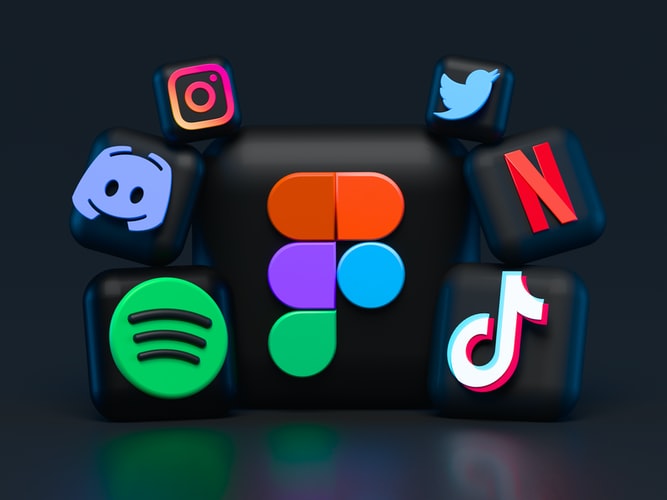
Content marketing is the use content throughout the customer's entire life cycle to help businesses meet their goals. This isn't about running advertisements campaigns. It's more about creating a narrative which appeals to readers, and makes life easier for consumers. Below are some benefits of content marketing. This strategy is worth exploring. We hope you find it useful. We wish you a happy marketing experience! Let's get into it!
Content marketing is a strategy for achieving business and customer goals using content from the entire customer life cycle
It has become increasingly important to devise a strategy that can meet the diverse needs and wants of both consumers and B2B buyers. Content marketers must consider their audiences, product, and problems in order to create content that will resonate with the right people. Content marketing must be about attracting customers at the right times and places with the right content.
Although there are many benefits to content marketing, each one requires a strategy. Once you determine the goals of your content marketing strategy, you can go about developing your strategy. Your content should add value to your customers, not distract them. It should offer useful information, enhance product usage, entertain, and entertain. The goal of content marketing is to reach your business and customers without being too promotional.
Advertising campaigns are not the only thing that matters.
Content marketing is something you may have heard about, but it's not just about advertising campaigns. Content marketing is a strategy that aims to build a long-term relationship. Effective content must be relevant and useful to your target audience in order to be effective. Here's how content market can help you do this. You don't need every article to be a sales pitch. It should solve a problem for the consumer.

Content marketing builds brand awareness. It builds trust and consideration even among those who may not want to purchase from your brand. This allows you to easily reach the right people, and convert them into buyers. Content marketing isn't limited by any limitations, unlike advertising. It is also effective for brands that can't afford to pay large sums of money for advertising. But it takes more effort and time to do than the latter.
It's creating a narrative that appeals and engages readers.
A story is much more than just a plot. Good stories are motivating and persuasive. To be successful in content marketing, you must take into account several aspects, including search engine optimization, distribution, and promotion. These are just a few of the important aspects you need to keep in mind. This article will discuss the essential aspects of telling a great story. It is important that you remember that the goal isn't just to promote your brand, but to create interest around it.
Emotional beings are a part of our species. By telling stories, brands can connect with consumers on a deeper level, appealing to the emotional side of the consumer. Stories are more engaging than advertisements which can be very dull. It is possible to transform boring content into content that elicits a particular reaction. Stories can create emotions, which can lead to desired results.
It's about helping consumers improve their lives
Content marketers must not view content marketing simply as another promotion tool. Instead, they need to be focused on providing valuable and relevant content to their audience. The most effective brands make their stories about their audience, not about themselves. Instead of focusing on products, they should be able to help customers improve their lives as well as the world around them. One of the most influential people in the field of content marketing is Ann Handley. Ann believes that content marketing is effective both online and offline.

Consumers prefer businesses that have valuable content and expertise. Moreover, they want content from industry experts who understand their problems. Your audience will trust you if you publish quality content. Consumers often make purchases after learning more about the solutions offered by a brand they are familiar with. Content marketing is a great way to gain trust from your customers and make them buy your products. This strategy has numerous benefits.
FAQ
Are there any common mistakes made when creating a content marketing plan?
You must have a plan for your content marketing strategy. Without a solid plan, all your efforts will be wasted time and money. If you don't know how to use the content or where it should go, you will create a lot of content.
A well-thought-out strategy for content marketing provides direction, focus, as well as goals. This helps you stay on track, as you move through each phase. If you are doing social media campaigns, it might be a good idea to first analyze which posts get the most engagement. This will let you determine what posts will bring traffic to your site. Based on the results, you can decide if you want to create blog articles or videos.
Another mistake people make is not estimating how long a content marketing campaign will be effective. It makes sense to start writing content today if you plan on launching a website tomorrow. But if you've been working on a content marketing strategy for six months, you probably want to wait until you have more data before pushing out new material.
Great content takes time. This is not something to rush.
Let's say you are a business owner and want to learn more about content market. Our guide How To Make Content That Workes is a good choice. It outlines ten steps to create content that works and ensures that your marketing programs are efficient.
What is my ROI for using a Content Marketing Strategy
Businesses that use a Content Marketing Strategy have an average ROI of between 5x-10x higher than those that don't.
A Content Marketing Strategy helps to generate leads, and sales.
It can also provide valuable insight into your company. These insights enable you to make better decisions and improve customer service.
So, if you're wondering how much money you could be making from a Content Marketing Strategy, let me tell you:
It's possible to double your overall revenues.
How can you make a content marketing strategy that works?
Start by deciding what kind of content content you want. Next, you need to identify who your target market are and how they use Internet. Next, you will need to identify the channels that are most likely to reach your target market. Then, select the appropriate keywords for each channel and create compelling copy for each piece.
How does Content Marketing work?
You know what someone is searching for when they visit your site. If they find what they need, great! If not, they will leave the site and look elsewhere. You can create helpful and relevant information that answers questions, solves issues, and adds value with content marketing. This content is easily accessible across all channels (email, social media, etc.). It will be available to everyone at all times.
Why is content important?
Any digital marketing campaign needs to include content. Create valuable content if you want to attract customers. Blogs are the best way of doing this. Blogs help you establish authority in your niche and make you more trustworthy. Trustworthiness builds credibility and leads to higher search engine rankings. You get organic search traffic when you rank highly.
Does content marketing require a large budget?
It all depends on how big your business is and where you are at. Small businesses often start with no dedicated resources. Once they start to grow, however, they soon realize how a solid content strategy can increase sales and improve customer engagement.
When you partner with a content marketing agency or freelance writer, you'll get access to a wide range of tools and expertise. These professionals can help identify problems and opportunities within your organization to guide the development of your content marketing program.
A good content marketing strategy will give you enough money to cover production costs while allowing you to invest in other parts of your business.
Statistics
- Out of the 1,500 marketers we surveyed for our State of Content Marketing report, 78% who felt their content marketing strategy was exceptionally effective in 2021 had documented their strategy. (semrush.com)
- Content marketing produces 3X more leads per dollar spent. Content marketing costs 62% less than traditional marketing. (criteo.com)
- Progress indicators (0–100%) allow each team member to see how attainable each goal is and understand what remains to be accomplished. (semrush.com)
- To further show the importance of this, 89% of people have stopped doing business with a company because of a poor experience. (neilpatel.com)
- Measure your goals with a progress indicator of 0-100%. Make your goals collaborative and transparent (semrush.com)
- In fact, would pay more for a better customer experience, and 86% of B2B buyers would pay more. (neilpatel.com)
- Seventy-two percent business to business (B2B) (mailchimp.com)
- We found that 40% of businesses don't have a documented strategy yet. (semrush.com)
External Links
How To
Content Marketing Tips: Infographic Creation Tips
Infographics are a powerful way to simplify complicated concepts, and make information easier to understand. Use infographics as a tool to promote your content marketing message.
For creating an infographic you'll need software such as Adobe Illustrator and Photoshop. These programs can be used for drawing out shapes and elements to represent data. After that, you can add fonts and colors to make it look professional. Once your design has been created, you can start uploading images from Unsplash/Pixabay to incorporate into it.
Online infographics can be a great source of inspiration. To show how many calories certain foods have, you can use a picture of a pyramid to illustrate this. You could also replace the numbers with images of the food. Or you could look at how many sugars are found in soda pop and replace that number with a picture from a Coke bottle.
Once you have designed your infographic you can share it via social media channels, such as Facebook or Twitter. This allows people to learn more about the concept, even if they aren't familiar. In order to make others see your infographic, use hashtags when you post it on social media. Users can follow along with specific conversations using hashtags.
Make your infographics shorter than normal if you are creating them. An average blog post can be anywhere from 2000 to 5000 words long, while an infographic only requires 500 to 1000 words. You can communicate more information in less space.
When designing your infographic, remember that some viewers may struggle to read small font sizes. You should use large fonts for your infographics. Don't rely too heavily upon color. Make sure all text is legible.
Here are some more tips
-
Choose an Infographic Template. There are many free templates online. Canva and Piktochart are some of the most popular.
-
Make your Infographic. Create your infographic using the template. You can use whatever media is most appropriate for your audience. If you want to create an infographic on the best places for food in Seattle, for example, you might use photos from local restaurants.
-
Add Text. Add text once your infographic is created.
-
Add Images. Add images to an infographic. These images can include charts, graphs and icons. Make sure the picture is relevant to your topic before you add it.
-
Make It Interactive. You can add interactive elements, such as maps, buttons, and links. This will make it easier for your audience to interact with you.
-
Share. Share the infographic once you're done.
-
Measure. Your infographic's performance. Did people click through? Did they signup for your mailing list? What was their reaction?
-
Improve. Is there a way to improve your infographic? Could you do better next time?
-
Repeat. Repeat.